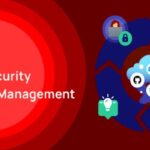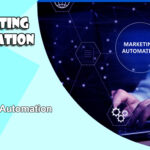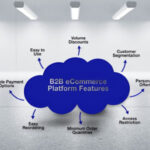
B2B Lead Generation: Strategies, Challenges, and Future Trends
In today’s competitive business landscape, B2B lead generation is no longer a linear process where companies simply collect contact information and push products. Instead, it has evolved into a dynamic, multi-channel approach that blends marketing, sales, data analysis, and personalized engagement. With organizations across industries striving to secure new clients and scale their operations, lead generation has become the lifeblood of B2B growth.
This article explores what B2B lead generation is, why it matters, proven strategies to attract and convert prospects, common challenges businesses face, and what the future holds for this vital process.
Understanding B2B Lead Generation
At its core, B2B lead generation is the process of identifying and attracting decision-makers from other businesses who are likely to benefit from your products or services. Unlike B2C, where purchases may be impulsive or emotionally driven, B2B leads are typically generated within a longer sales cycle involving multiple stakeholders, budgets, and structured evaluations.
Leads in the B2B context can be categorized into different stages:
-
Cold leads – Prospects who may not yet know about your business.
-
Warm leads – Prospects who have shown some level of interest, such as downloading a whitepaper or attending a webinar.
-
Qualified leads – Prospects who meet predefined criteria (budget, authority, need, and timeline) and are ready for direct sales engagement.
The success of lead generation depends on not just the quantity but the quality of leads, as unqualified leads waste time and resources.
Why B2B Lead Generation Matters
Without a consistent stream of high-quality leads, B2B companies risk stagnation. Here are key reasons why lead generation is essential:
-
Revenue Growth: Leads drive sales opportunities, and sales opportunities convert into revenue.
-
Market Expansion: Identifying new prospects allows companies to tap into new sectors, regions, and industries.
-
Brand Visibility: Content-driven lead generation strategies increase awareness and establish thought leadership.
-
Customer Insights: Every interaction provides data that can refine offerings and enhance customer experience.
In short, lead generation ensures businesses remain competitive and sustainable in an ever-evolving marketplace.
Proven Strategies for B2B Lead Generation
Over the years, businesses have tested countless approaches to generating leads. The following strategies stand out as particularly effective:
1. Content Marketing
Content remains the backbone of modern lead generation. By offering valuable resources, businesses attract prospects searching for solutions. Examples include:
-
Whitepapers and eBooks that educate decision-makers.
-
Case studies showcasing real-world results.
-
Blog articles that address industry pain points.
-
Infographics and explainer videos for quick insights.
High-quality content positions your company as an authority and nurtures leads throughout the buyer’s journey.
2. Search Engine Optimization (SEO)
With 68% of online experiences beginning with a search engine, ranking high on Google is critical. Optimizing for keywords, building backlinks, and creating authoritative content ensures that your business is visible to decision-makers when they search for solutions.
3. Social Media Marketing
Platforms like LinkedIn, Twitter, and even niche forums have become essential for B2B networking. LinkedIn, in particular, is a goldmine for lead generation, allowing businesses to:
-
Share content with targeted audiences.
-
Engage with industry groups.
-
Use LinkedIn Ads to reach decision-makers based on job titles, industries, and company sizes.
4. Email Marketing
Despite the rise of new platforms, email marketing remains a powerhouse in B2B lead generation. Personalization, segmentation, and automation make it possible to nurture prospects over time. From newsletters to drip campaigns, email is highly effective for guiding leads down the sales funnel.
5. Account-Based Marketing (ABM)
ABM takes a hyper-focused approach by targeting specific high-value accounts with personalized campaigns. Instead of casting a wide net, businesses concentrate resources on winning a select group of prospects that can yield the most value.
6. Webinars and Virtual Events
With remote work reshaping how businesses operate, webinars have become an effective tool for generating leads. By providing insights, showcasing expertise, and engaging live with audiences, companies can build trust and collect valuable lead data.
7. Paid Advertising
Google Ads, LinkedIn Ads, and retargeting campaigns allow businesses to capture demand from those actively searching for solutions. Paid ads can be expensive, but when optimized, they deliver immediate visibility and measurable results.
8. Referral Programs and Partnerships
One often overlooked strategy is leveraging existing clients or business partners. Incentivizing referrals or co-marketing with strategic allies can provide access to new networks of qualified prospects.
Challenges in B2B Lead Generation
While the strategies above can be powerful, B2B lead generation is not without obstacles. Businesses often struggle with:
1. Longer Sales Cycles
Unlike consumer sales, B2B purchases involve multiple stakeholders and require more time to build trust. This makes nurturing leads more resource-intensive.
2. Generating High-Quality Leads
Many companies focus on quantity rather than quality. Without proper qualification, sales teams waste time chasing unfit leads.
3. Aligning Sales and Marketing
Misalignment between marketing and sales departments leads to missed opportunities. A lack of communication about lead quality, handoff processes, and buyer personas often causes friction.
4. Data Overload
While technology provides access to vast amounts of data, many businesses struggle to analyze and use it effectively to refine strategies.
5. Budget Constraints
Small to mid-sized businesses may not have the resources for paid campaigns, advanced tools, or large content teams, limiting their ability to scale lead generation efforts.
Measuring Success in B2B Lead Generation
To ensure strategies deliver results, businesses must track and measure performance using clear metrics:
-
Cost Per Lead (CPL): How much it costs to acquire each lead.
-
Lead Conversion Rate: The percentage of leads that become paying customers.
-
Lead-to-Sale Time: The average duration from initial contact to closing.
-
Customer Lifetime Value (CLV): The long-term value of customers acquired through lead generation.
-
Return on Investment (ROI): The overall profitability of campaigns.
Tracking these KPIs ensures businesses make data-driven decisions to improve outcomes.
The Role of Technology in Lead Generation
Modern B2B lead generation would be impossible without technology. Tools like Customer Relationship Management (CRM) systems, marketing automation platforms, and AI-driven analytics streamline the entire process.
-
CRM Systems: Platforms like Salesforce or HubSpot track leads, interactions, and progress across the sales funnel.
-
Marketing Automation: Tools such as Marketo or Mailchimp automate email campaigns, lead scoring, and nurturing.
-
Artificial Intelligence: AI-powered chatbots, predictive analytics, and personalization engines help engage leads in real-time and forecast behavior.
-
Data Enrichment Tools: Services like ZoomInfo provide detailed information about prospects, enhancing targeting precision.
By leveraging these tools, companies can operate more efficiently and scale their lead generation activities.
The Future of B2B Lead Generation
As buyer behavior and technology evolve, the future of B2B lead generation will look significantly different from today. Here are some trends shaping the next decade:
1. Hyper-Personalization
Generic emails and ads are losing effectiveness. Businesses will increasingly rely on AI to create tailored experiences based on individual buyer behaviors, industries, and pain points.
2. Conversational Marketing
Chatbots, live chat, and conversational AI will continue to play a major role, enabling real-time interactions with prospects and reducing friction in the sales funnel.
3. Video Content Dominance
With decision-makers pressed for time, video content—such as product demos, explainer videos, and customer testimonials—will become an even stronger lead generation tool.
4. Ethical and Transparent Practices
With increasing scrutiny over data privacy and compliance regulations like GDPR, businesses must adopt transparent practices in collecting and using customer data.
5. Integration of AI and Predictive Analytics
Predictive lead scoring and AI-driven recommendations will allow companies to prioritize leads most likely to convert, reducing wasted efforts.
6. Community-Led Growth
Instead of only pushing sales, businesses will focus on building communities—through forums, LinkedIn groups, or niche platforms—where decision-makers can interact, share insights, and organically generate interest in solutions.
Conclusion
B2B lead generation is more than just gathering email addresses—it is a comprehensive process that combines content, technology, personalization, and trust-building. While challenges like long sales cycles and data complexity remain, businesses that embrace innovative strategies and emerging technologies will thrive.
The most successful companies will not be those chasing every lead but those focusing on quality, relationships, and customer-centric approaches. As the future unfolds, businesses that adapt quickly to shifting buyer behavior and invest in personalization, automation, and transparent engagement will secure their competitive edge in the global market.

















